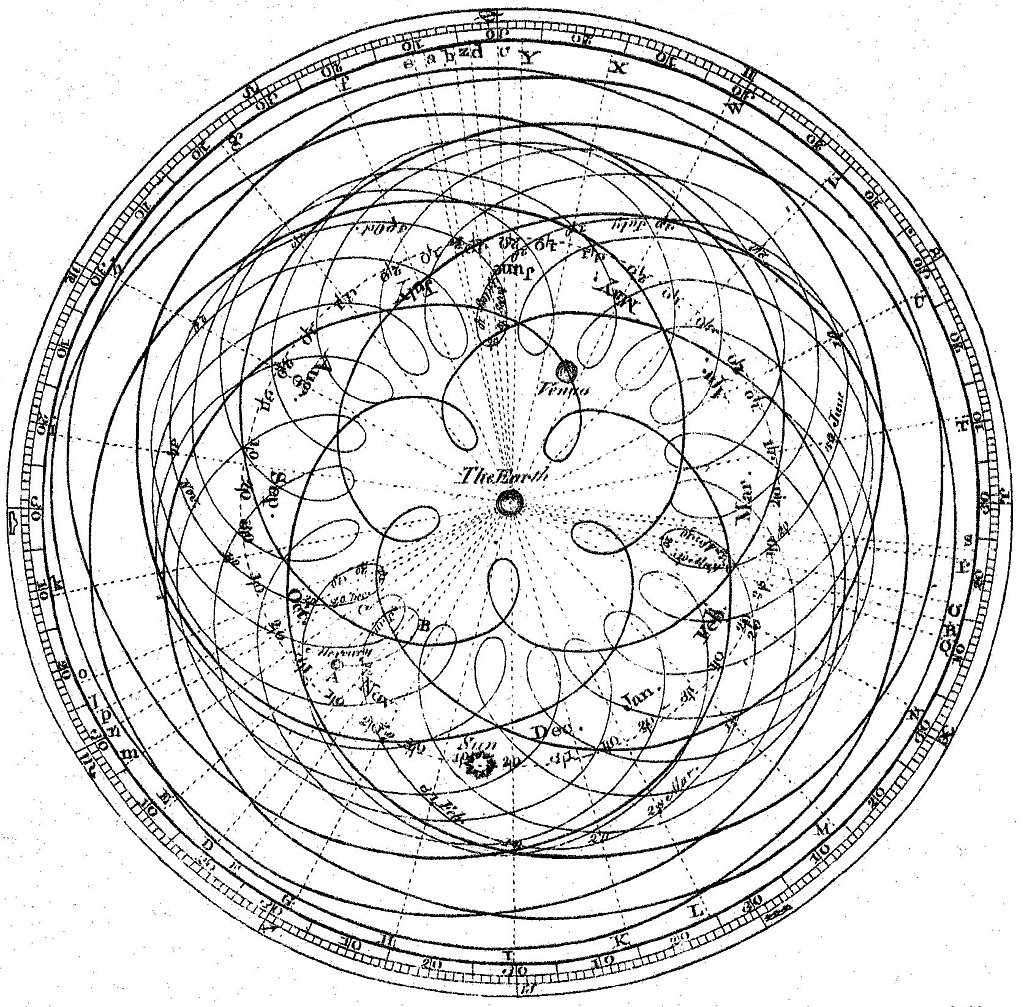
Thus the time the sun takes to rotate through half of outer space is called an ayana, or its period of movement [in the north or in the south]. The sun-god has three speeds — slow, fast and moderate. The time he takes to travel entirely around the spheres of heaven, earth and space at these three speeds is referred to, by learned scholars, by the five names Saṁvatsara, Parivatsara, Iḍāvatsara, Anuvatsara and Vatsara.
Above the rays of the sunshine by a distance of 100,000 yojanas [800,000 miles] is the moon, which travels at a speed faster than that of the sun. In two lunar fortnights the moon travels through the equivalent of a saṁvatsara of the sun, in two and a quarter days it passes through a month of the sun, and in one day it passes through a fortnight of the sun.
When the moon is waxing, the illuminating portions of it increase daily, thus creating day for the demigods and night for the pitās. When the moon is waning, however, it causes night for the demigods and day for the pitās. In this way the moon passes through each constellation of stars in thirty muhūrtas [an entire day]. The moon is the source of nectarean coolness that influences the growth of food grains, and therefore the moon-god is considered the life of all living entities. He is consequently called Jīva, the chief living being within the universe.
Because the moon is full of all potentialities, it represents the influence of the Supreme Personality of Godhead. The moon is the predominating deity of everyone’s mind, and therefore the moon-god is called Manomaya. He is also called Annamaya because he gives potency to all herbs and plants, and he is called Amṛtamaya because he is the source of life for all living entities. The moon pleases the demigods, pitās, human beings, animals, birds, reptiles, trees, plants and all other living entities. Everyone is satisfied by the presence of the moon. Therefore the moon is also called Sarvamaya [all-pervading].
There are many stars located 200,000 yojanas [1,600,000 miles] above the moon. By the supreme will of the Supreme Personality of Godhead, they are fixed to the wheel of time, and thus they rotate with Mount Sumeru on their right, their motion being different from that of the sun. There are twenty-eight important stars, headed by Abhijit.
Some 1,600,000 miles above this group of stars is the planet Venus, which moves at almost exactly the same pace as the sun according to swift, slow and moderate movements. Sometimes Venus moves behind the sun, sometimes in front of the sun and sometimes along with it. Venus nullifies the influence of planets that are obstacles to rainfall. Consequently its presence causes rainfall, and it is therefore considered very favorable for all living beings within this universe. This has been accepted by learned scholars.
Mercury is described to be similar to Venus, in that it moves sometimes behind the sun, sometimes in front of the sun and sometimes along with it. It is 1,600,000 miles above Venus, or 7,200,000 miles above earth. Mercury, which is the son of the moon, is almost always very auspicious for the inhabitants of the universe, but when it does not move along with the sun, it forbodes cyclones, dust, irregular rainfall, and waterless clouds. In this way it creates fearful conditions due to inadequate or excessive rainfall.
Situated 1,600,000 miles above Mercury, or 8,800,000 miles above earth, is the planet Mars. If this planet does not travel in a crooked way, it crosses through each sign of the zodiac in three fortnights and in this way travels through all twelve, one after another. It almost always creates unfavorable conditions in respect to rainfall and other influences.
Situated 1,600,000 miles above Mars, or 10,400,000 miles above earth, is the planet Jupiter, which travels through one sign of the zodiac within the period of a Parivatsara. If its movement is not curved, the planet Jupiter is very favorable to the brāhmaṇas of the universe.
Situated 1,600,000 miles above Jupiter, or 12,000,000 miles above earth, is the planet Saturn, which passes through one sign of the zodiac in thirty months and covers the entire zodiac circle in thirty Anuvatsaras. This planet is always very inauspicious for the universal situation.
Situated 8,800,000 miles above Saturn, or 20,800,000 miles above earth, are the seven saintly sages, who are always thinking of the well-being of the inhabitants of the universe. They circumambulate the supreme abode of Lord Viṣṇu, known as Dhruvaloka, the polestar.
